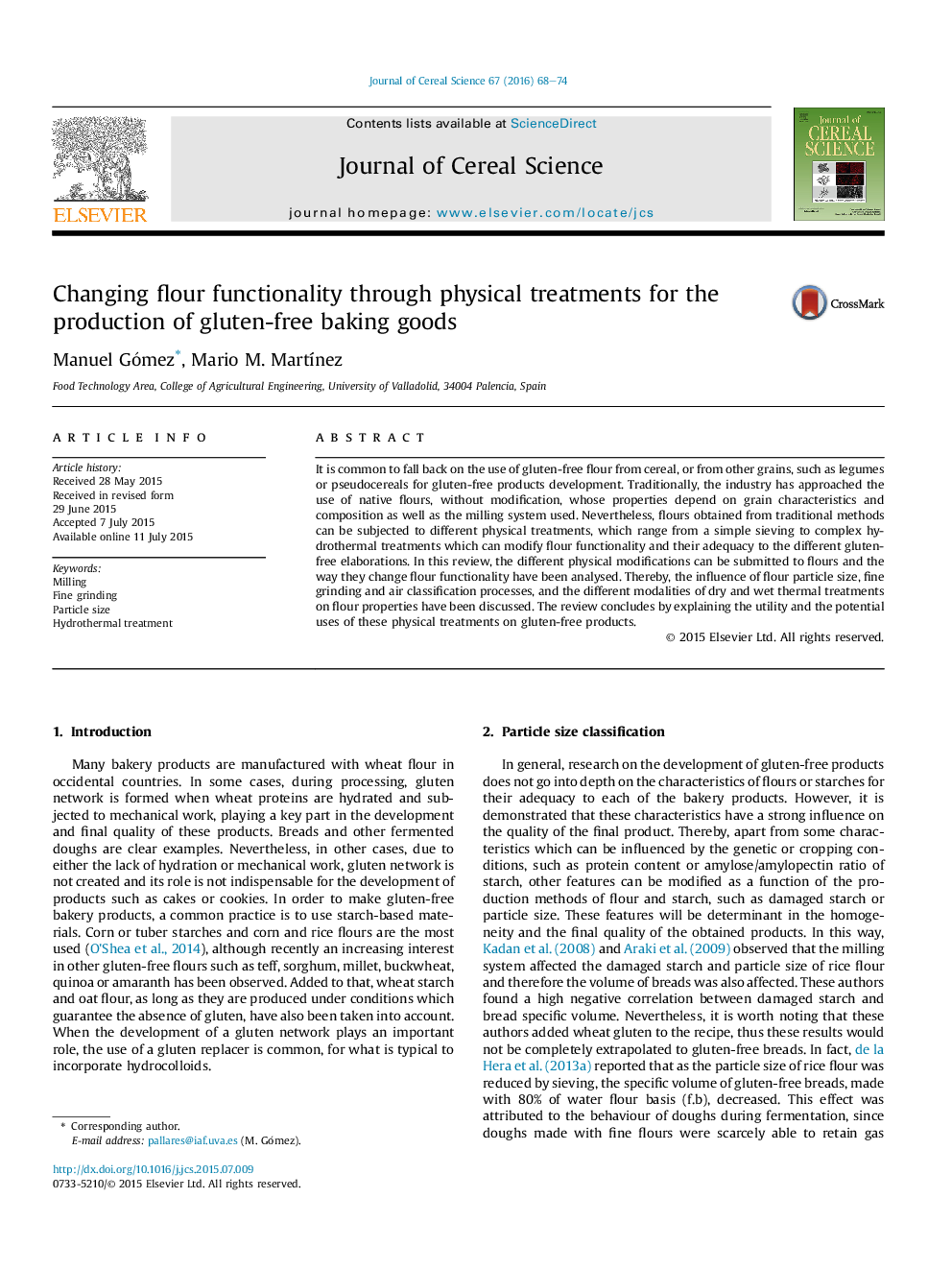| Article ID | Journal | Published Year | Pages | File Type |
|---|---|---|---|---|
| 6377751 | Journal of Cereal Science | 2016 | 7 Pages |
â¢The role of physically modified flour in non-gluten cereal-based foods was reviewed.â¢The influence of particle size and the fine grinding and air classification was discussed.â¢The effect of thermal treated flours on gluten-free goods has also been approached.â¢A proper selection of physical processing conditions can improve gluten-free products.
It is common to fall back on the use of gluten-free flour from cereal, or from other grains, such as legumes or pseudocereals for gluten-free products development. Traditionally, the industry has approached the use of native flours, without modification, whose properties depend on grain characteristics and composition as well as the milling system used. Nevertheless, flours obtained from traditional methods can be subjected to different physical treatments, which range from a simple sieving to complex hydrothermal treatments which can modify flour functionality and their adequacy to the different gluten-free elaborations. In this review, the different physical modifications can be submitted to flours and the way they change flour functionality have been analysed. Thereby, the influence of flour particle size, fine grinding and air classification processes, and the different modalities of dry and wet thermal treatments on flour properties have been discussed. The review concludes by explaining the utility and the potential uses of these physical treatments on gluten-free products.
